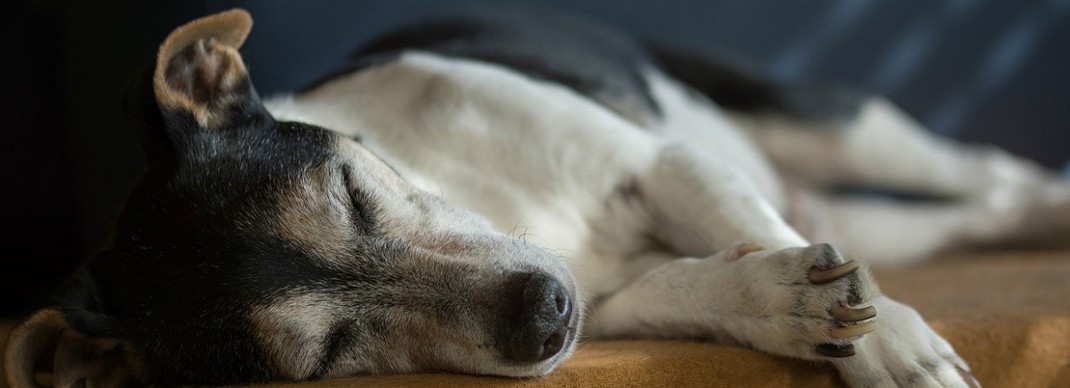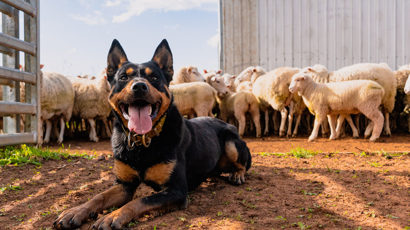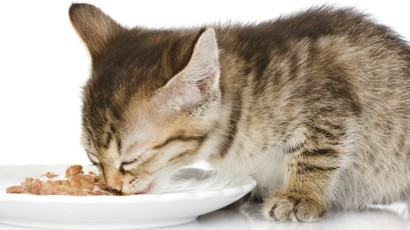Arthritis in Dogs & Cats

Osteoarthritis or arthritis is a disease involving the deterioration of the cartilage which sits between bones, in the joint space where they meet. The cartilage’s role is to aid movement and absorb the forces which travel down the bones. It cushions the impact of the forces on the bones, and absorbs pressure, meaning your pet can undertake everyday activities.
Just the same as in humans, arthritis is common (and some say increasing) in dogs and cats. Increasing life expectancy is one contributing factor as is weight gain and obesity. In both circumstances, joints are exposed to prolonged wear and tear.
Cat and dog arthritis and life expectancy
The disease mainly affects cats and dogs in their middle to older years and can affect all breeds and sizes. The earlier arthritis is diagnosed and treated the longer your pet will live comfortably with the condition so it's vital to visit your vet regularly and see them immediately if you suspect your pet has arthritis.
What causes arthritis in pets?
Arthritis may also follow past injury, whether it be a traumatic or athletic injury, for example falling from a height or leaping and landing abnormally and tearing a ligament. For cats, we see it most commonly as part of the natural aging process, and one study revealed that 90% of cats aged 12 and over had some form of degenerative change of their joints (Hardie, 2002). Some breeds experience higher incidences of the condition – in dogs, these include Labrador Retrievers, Golden Retrievers, German Shepherds and Rottweilers; in cats, Maine Coons and Burmese breeds tend to be more affected. Osteoarthritis is a ‘watch-out’ condition particularly for the larger, heavier breeds, and those which undertake high levels of exercise or work throughout their lives.
How to spot arthritis in dogs and cats
Signs which we should all look out for, which tell us that our pets may have arthritis:
- Changes to activity levels, taking less exercise, engaging in less ‘play’ behaviour
- More subdued behaviour, perhaps sleeping more and seeking more ‘quiet time’
- Difficulties in getting up, walking or running, travelling up and down stairs or jumping from one level to another
- Changes to body shape: muscle distribution and size changes with long-term lack of use
- Crying out in pain
- Licking at the joints, which may be hot to touch or ‘creak and crack’ as it does in us
What should I do if my pet has arthritis?
It’s important to take any pet showing signs of arthritis to a vet, who can fully diagnose and outline a treatment plan for your pet.
Caring for your pet with arthritis
The first and main goal of course is to reduce pain and inflammation in the joint. Prescription drugs often work well, and some long-term medications are created to be gentle on the body. More holistic approaches start with weight management and adapting your pet’s exercise patterns, possibly including physiotherapy, massage or even hydrotherapy. Acupuncture can also work well for arthritis patients.
Arthritis diet for dogs and cats
Nutraceuticals or functional foods show much promise in easing arthritis in pets, with omega-3 fatty acids (present in fish oil), glucosamine and chondroitin sulphate (very familiar in the human world) and a variety of other supplements being found in quality pet foods.
Assisting your arthritic pet around the house
To help alleviate pain and discomfort, do what you can around the house to assist your pet, if diagnosed with arthritis. This includes:
- Ensuring that food and water bowls are easily accessible
- Helping them minimise their need to negotiate big jumps, steep or long stairs, etc
- Considering litter trays for cats – these should have low sides
- In winter, keep beds off the ground, inside and in a warm spot. Yours Droolly for example has a range of osteo beds made from memory foam to relieve pressure points and provide extra support for bones and joints.
While arthritis can be limiting and often painful if left unnoticed, remember that it is a common condition. Because of this, your veterinary team will have a lot of experience, a host of advice and pro-active steps that you can take with your dog and cat, to ensure they remain happy and healthy; with a pro-active and caring approach, there is certainly light at the end of the tunnel.


